St. Kilda series
When Joel and I travelled to Scotland two years ago, I was very much influenced by the landscape. While we were visiting Dunvegan Castle on the Isle of Skye (the seat of Clan MacLeod), I saw a tiny little exhibit in the hall with artefacts from the island of St. Kilda. It said St. Kilda was the most remote island in the Outer Hebrides and the people lived there for thousand of years in almost complete isolation, until 1930 when the last residents requested to be evacuated. Evacuated, I thought? I was intrigued, so I picked up a book in the castle’s bookstore called The Island on the Edge of the World: The Story of St. Kilda and it was fascinating.
The small island was such a hostile environment and yet the St. Kildans managed to eke out a living for a thousand years, subsisting mainly on fowling (catching and eating seabirds) and exporting wool products later on. Their culture was primitive, pagan and completely unique until the 19th century, when advances in technology meant that ships could regularly make trips out to the island, bringing mainstream religion and tourism with them. It’s acknowledged in the book that this is what ruined the St. Kildans. The St. Kildans became dependent on tourism and the money it brought (money was a foreign concept to them before then, but rather they bartered and traded) and their traditional way of life started to become obsolete. Knowledge of the wide world resulted in some St. Kildans becoming restless and unsatisfied with their traditional way of life. Finally in 1930, the handful of residents left on the island asked to be evacuated, as it became unsustainable for them to continue living there. The village is now mostly in ruins with a couple of restored buildings and is maintained by the National Trust for Scotland. Joel and I did not have time to go there (it’s quite an ordeal to get there), but one day we will!
There’s so much more I could say about St. Kilda, but I highly recommend reading the aforementioned book. I did a series of illustrations influenced by St. Kilda and the other parts of Scotland I have seen.
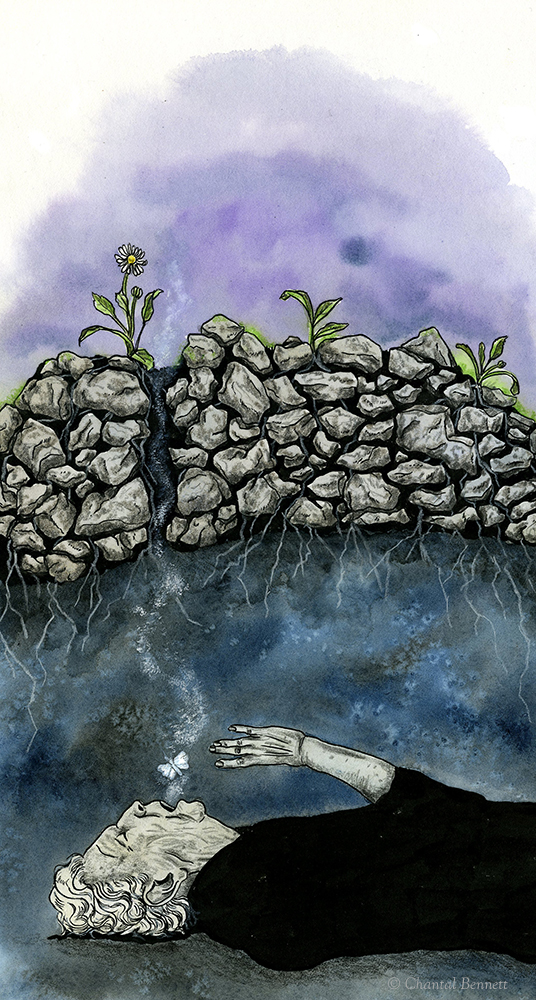
Cairn – this illustration is inspired by belief held by St. Kildans that the soul transmigrates and departs the body in the form of an animal; a white moth, in this case.
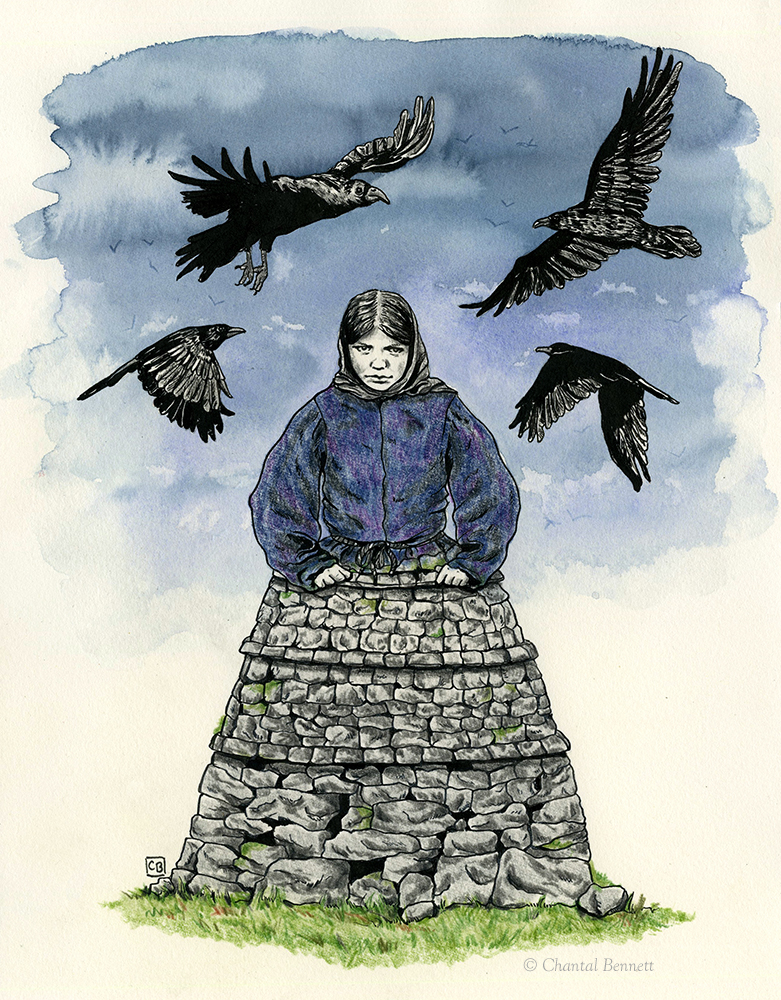
Cleit Girl – The ruins of “cleits” dot the landscape of St. Kilda and some are believed to be a thousand years old.
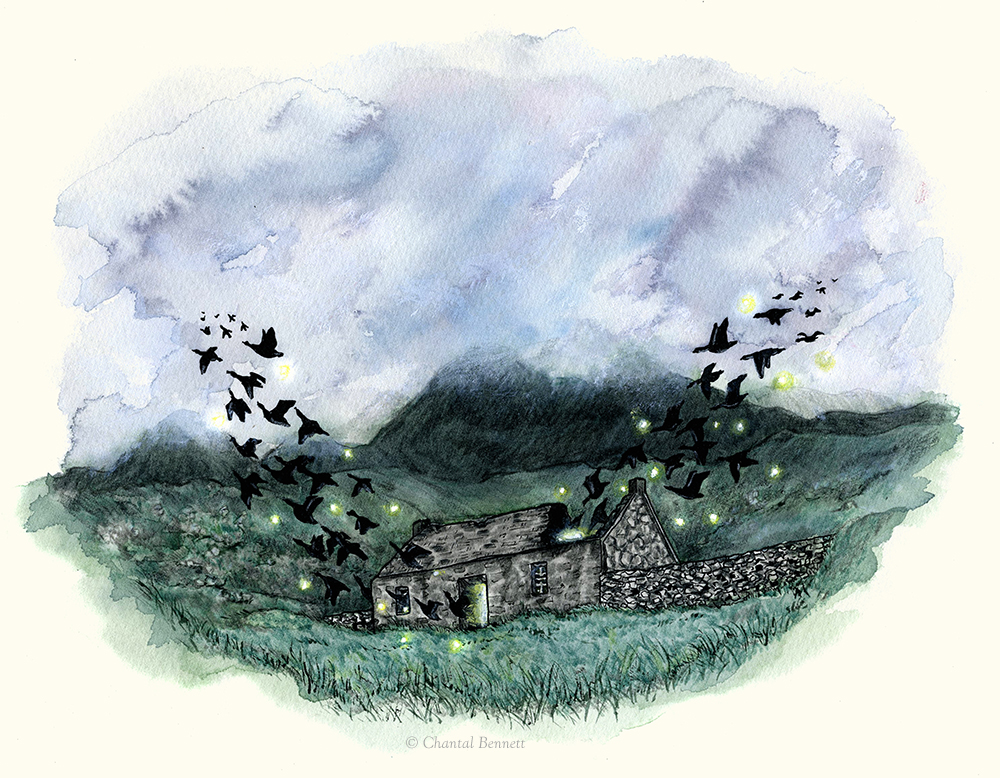
The Sluagh – St. Kildans believed in the Spirit Host bird phenomena (known locally as the “Sluagh”). a spirit geese formation accompanied by a west wind that could pick up a man and transport him over long distances.
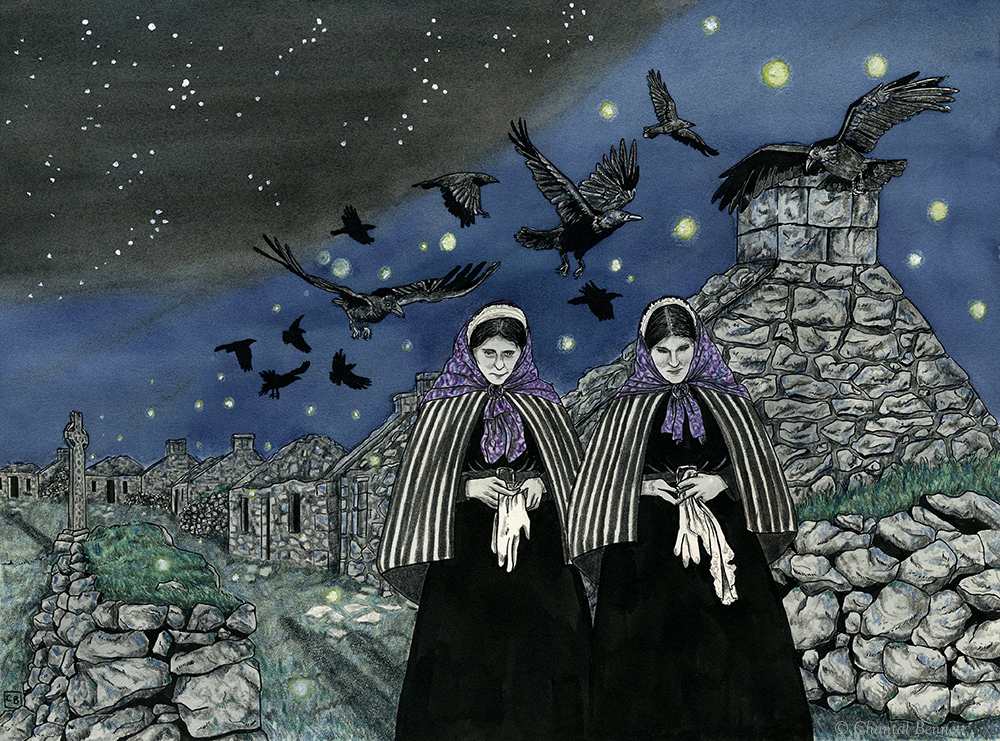
Hirta – inspired by the women of St. Kilda
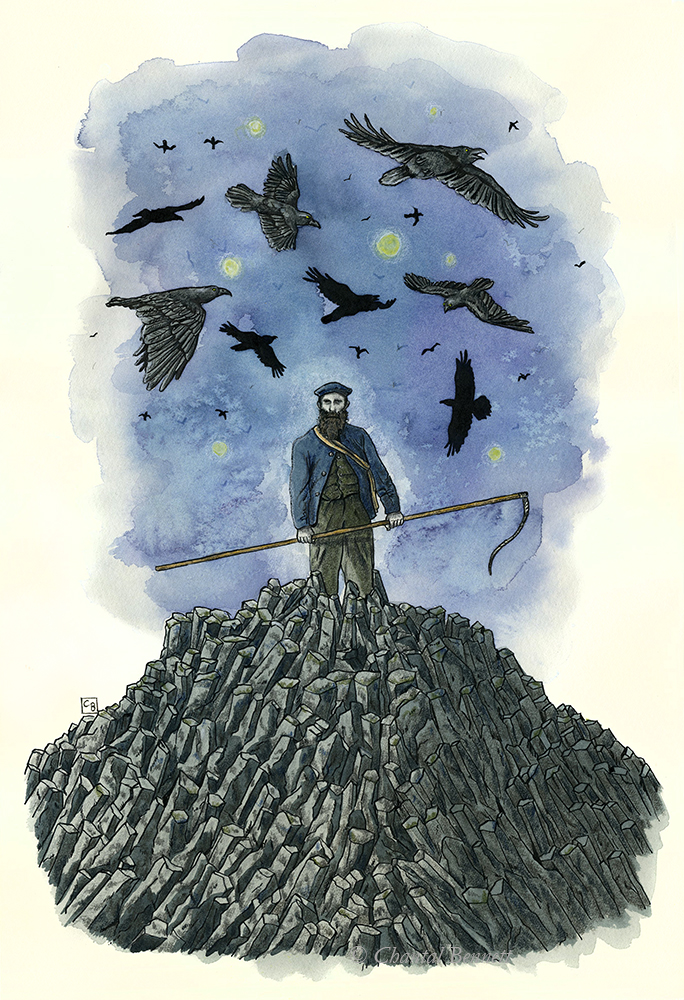
The Fowler – inspired by the men of St. Kilda who went “fowling” for birds and the idea of isolation.

Leave a Reply